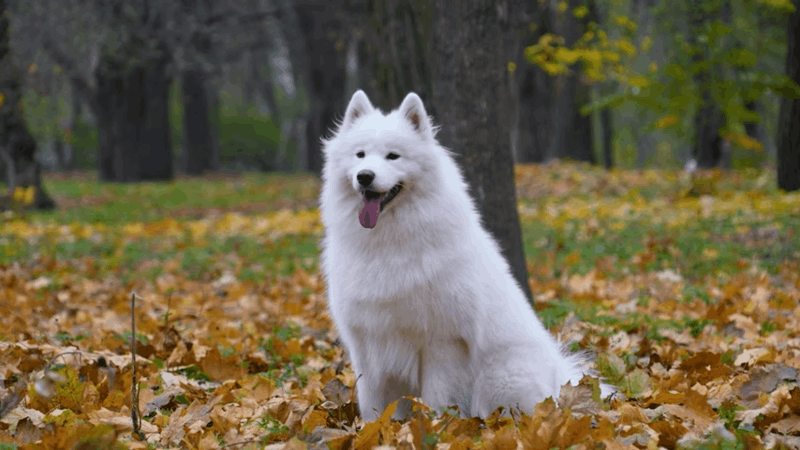No products in the cart.
The topic of growing interest among pet owners seeking alternative approaches to managing their furry companions’ health is CBD for cataracts in dogs. As cataracts, the clouding of the eye’s lens can impact a dog’s vision and overall quality of life, CBD has emerged as a potential supplement with various therapeutic properties.
We’ll examine current knowledge about canine CBD use with cataracts in this blog, offering light on its possible efficacy and security. Before adding CBD to a dog’s health regimen, like with any therapy choice, a veterinarian must be consulted.
Cataracts in Dogs and More Things We Should Know

Cataracts in dogs refer to the clouding of the eye’s lens, leading to impaired vision or blindness. Although they are frequently related to age, they can also be brought on by genetics or specific medical disorders. Cataracts can develop gradually and may affect one or both eyes.
The condition can significantly impact a dog’s quality of life and may require surgical intervention to restore vision in severe cases. Regular eye examinations by a veterinarian are essential for early detection and appropriate management of cataracts in dogs, ensuring they continue to lead fulfilling and happy lives.
Dog Cataracts Symptoms
Cataracts in dogs can manifest through various symptoms, indicating a potential issue with their vision. Some common symptoms of dog cataracts include
- Cloudy or bluish-gray appearance in one or both eyes: The lens becomes opaque, leading to visible cloudiness or discoloration in the affected eye(s).
- Decreased vision or blindness: As the cataracts progress, a dog’s vision gradually deteriorates, leading to difficulty seeing objects or potential blindness.
- Bumping into objects: Dogs with cataracts may start bumping into furniture or walls, displaying their reduced ability to navigate their surroundings.
- Eye squinting or rubbing: Dogs might squint or frequently rub their eyes due to discomfort caused by cataracts.
- Changes in behavior: Loss of vision can cause dogs to become more hesitant or anxious, especially in unfamiliar environments.
- Increased eye discharge: Cataracts can cause increased tear production or discharge from the eyes.
- Trouble finding treats or toys: Dogs may struggle to locate treats or toys that they used to find easily.
Please remember that these symptoms can also be caused by other eye conditions and to determine the precise cause of the symptoms and provide appropriate treatment, having a veteran evaluate the dog’s eyes is so important. Early detection and intervention can help manage the condition more effectively and improve the dog’s overall quality of life.
What Causes Cataracts in Dogs?
Cataracts in dogs can have various causes, and they can develop at any age. Several of the frequent causes include
- Aging: Age-related cataracts are the most common cause of blindness in senior dogs, much like in humans. Cataracts develop as a result of the eye’s lens aging and gradually losing transparency over time.
- Genetics: Due to hereditary causes, some dog breeds are more susceptible to acquiring cataracts. Poodles, Cocker Spaniels, Boston Terriers, and Siberian Huskies are breeds that are more prone to hereditary cataracts.
- Diabetes: Dogs with diabetes are more likely to acquire cataracts. Cataract formation can come from changes in the lens brought on by high blood sugar levels.
- Trauma: Cataracts can form as a result of eye trauma or injuries that cause lens damage.
- Nutritional deficiencies: Insufficient nutrition, particularly a deficiency in a few crucial elements, can cause dogs to develop cataracts.
- Toxicity: Certain poisons or drugs can cause cataracts in dogs.
- Inflammatory conditions: Cataracts can develop in the eye as a result of persistent inflammation or infections.
Dog owners should be aware of these potential reasons and take preventive action as soon as possible. Regular eye check-ups with a veterinarian can help detect cataracts early, enabling prompt treatment if needed and minimizing the impact on the dog’s vision and overall health.
Dog Cataracts Stages
Cataracts in dogs can be categorized into different stages based on their severity and impact on the dog’s vision. Following are typical descriptions of cataract stages
- Incipient cataracts: The dog may not currently have a substantial vision impairment, and a normal eye check may not readily reveal cataracts.
- Immature cataracts: As the cataracts progress to the immature stage, they cover a larger portion of the lens, leading to increased cloudiness. Dogs may start experiencing mild to moderate vision loss, and you might observe subtle changes in their behavior and ability to navigate their surroundings.
- Mature cataracts: At this stage, cataracts cover the entire lens, resulting in significant vision impairment or even complete blindness. Dogs with mature cataracts might have difficulty recognizing objects and moving around familiar places.
- Hypermature cataracts: In this advanced stage, the cataracts become more opaque and hard. The lens may shrink and pull away from the surrounding tissue, causing inflammation and discomfort in the eye. Dogs with hypermature cataracts are at higher risk of developing complications.
Please remember that each dog will develop cataracts differently depending on factors like breed, age, inheritance, and underlying medical conditions.
To monitor the progression of cataracts and to give appropriate management or therapy as needed, regular eye exams with a veterinarian are essential. Early diagnosis and treatment can prevent cataract progression and improve the dog’s quality of life in general.
Can Cataracts Cause Glaucoma in Dogs?

Cataracts can cause glaucoma in dogs. Glaucoma is a disorder characterized by elevated intraocular pressure, which can cause optic nerve damage and potential visual loss. Dogs that develop cataracts may experience an increase in intraocular pressure as a result of the clouded lens obstructing the usual flow of fluid within the eye.
Glaucoma caused by cataracts is known as secondary glaucoma and to watch for signs of glaucoma development, it is essential to monitor dogs with cataracts closely, especially as the cataracts progress. Secondary glaucoma, if not addressed, can cause extreme pain, irreversible visual loss, and lifelong nerve damage.
If a dog develops cataracts or glaucoma symptoms, please seek immediate medical attention. Medication to reduce intraocular pressure and surgery to address the cataracts are the treatment options and they also can be combined to get the best result, it is based on the severity of the condition. Early detection and proper management can help alleviate the discomfort and preserve as much vision as possible for the affected dog.
Glaucoma vs Cataracts Dogs: The Difference
Glaucoma and cataracts are both eye conditions that can affect dogs, but they are distinct and have different underlying causes and characteristics
| Aspect | Glaucoma | Cataracts |
| Definition | Increased intraocular pressure | Clouding of the eye’s lens |
| Causes | Primary or secondary (due to other eye conditions) | Aging, genetics, diabetes, trauma, toxins, etc. |
| Pathophysiology | Increased fluid buildup in the eye | Protein clumping in the lens |
| Impact on Vision | Vision loss, potential blindness | Vision loss, potential blindness |
| Pain | Usually painful | Typically painless |
| Appearance of Eye | May have redness or enlarged eye | Cloudy or bluish-gray appearance in the eye |
| Progression | Rapid or gradual, depending on the type | Gradual, as cataracts grow larger over time |
| Diagnosis | Intraocular pressure measurement | Eye examination, visual observation, or tests |
| Treatment | Medication, surgery, or both | Surgery to remove cataracts or manage symptoms |
| Preventive Measures | May not be preventable in some cases | Early detection and management of underlying factors |
| Breed Predisposition | Certain breeds may be more susceptible | Certain breeds may be genetically predisposed |
It’s important to remember that glaucoma and cataracts can occasionally coexist in dogs. For an accurate diagnosis and the best course of treatment, a complete veterinarian examination is required.
Treatment for Cataracts in Dogs
The primary treatment for cataracts in dogs is surgical removal of the affected lens, which is called lens extraction. There are different surgical techniques available
- Phacoemulsification: This is the most common and advanced technique, involving the use of ultrasonic energy to break up the cataract and remove it through a small incision. An artificial intraocular lens (IOL) is usually implanted to restore vision.
- Intracapsular extraction: This older technique involves the removal of the entire lens, including the lens capsule. It is less commonly used today. capsule intact. An IOL may or may not be implanted.
- Intracapsular extraction: This older technique involves the removal of the entire lens, including the lens capsule. It is less commonly used today.
- Medical management: If surgery is not an option for various reasons, some dogs may be managed conservatively with medications and regular monitoring of their eye health.
For a precise diagnosis and a treatment plan customized to your dog’s unique condition and needs, always visit a veterinarian. The optimal outcome for both canine cataracts depends heavily on early detection and prompt treatments.
CBD for Cataracts in Dogs: Is It Safe?

It is crucial to understand that canine cataracts are a complicated eye ailment and that a veterinarian should advise on any treatment options. There may be risks involved with using CBD products because of their variable potency and quality, particularly if the formulation includes contaminants or other compounds that are dangerous to dogs.
It’s important to speak with a veterinarian before contemplating CBD for cataracts in dogs to go through various treatment choices, guarantee your pet’s safety, and ensure your pet’s health. Always prioritize your dog’s health and seek professional guidance before introducing any new treatments or supplements.
Can CBD Help Cataracts?
It cannot be denied that CBD brings potential therapeutic benefits in treating a variety of health disorders, however, there is no evidence to support its use in the management of cataracts, and to completely understand the effectiveness and risks, more research is necessary.
Like any medical disease, cataracts must be treated with evidence-based methods. Please consult with a veterinarian to discuss appropriate treatment options and the best course of action for your dog’s health if your furry friend has been diagnosed with cataracts. Your dog’s vision and overall health will benefit from the most appropriate and efficient cataract management strategies that your veterinarian can provide.
Type of CBD Suitable for Dogs with Cataracts
If you are considering using CBD for cataracts in dogs for other purposes like pain management, anxiety relief, or general wellness, here are some common types of CBD products suitable for dogs
- CBD oil/tinctures: These are liquid formulations that can be administered directly into your dog’s mouth or added to their food.
- CBD dog treats: CBD-infused treats are a popular option for dogs, as they make dosing more convenient and enjoyable for your pet.
- CBD capsules: Capsules contain pre-measured doses of CBD and can be administered orally to your dog.
- CBD topicals: CBD-infused balms or creams for dogs can be applied topically to target specific areas for localized relief.
Make careful to choose a CBD product that is especially developed for animals when buying one for your dog. Avoid products that contain THC and look for products that have been third-party tested for quality and purity to ensure they are free from harmful contaminants.
A veterinarian should be consulted before using any CBD products to improve the health of your beloved canine companions. The usage of CBD for cataracts should be done with caution. You can decide on your dog’s health with the help of a veterinarian.
Conclusion
CBD for cataracts in dogs is a topic that generates curiosity among pet owners seeking alternative remedies. To explore suitable treatment options and ensure the best care for your beloved pet’s health, please consult a trusted veterinarian before considering CBD for your dog’s cataracts or any other health concern. Remember, evidence-based decisions lead to the safest and most beneficial outcomes for your furry companion.
Hello, I am Hazel Bennett, an experienced copywriter specializing in the fascinating topic of CBD for dogs. With a passion for pet wellness and extensive knowledge of CBD’s potential benefits, I am here to provide you with informative and engaging content.



